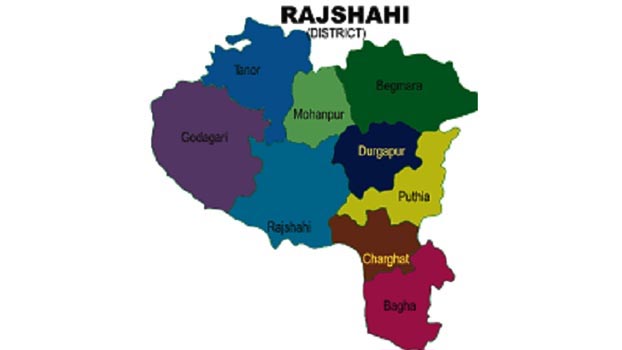Rajshahi adjudged district prone to extreme climate

Rajshahi has been adjudged as the 'extreme climate prone' district of the country.
In a research conducted on Environment and Public Health by Atik Ahsan, it is seen from reviewing temperature of nine districts of the country from 1980 to 2017 that Rajshahi and Jashore are the extreme climate prone districts of the country.
In Rajshahi, extreme cold or extreme hot weather persists for 155-day on an average in a year while in Jashore the same type of weather remains for 153-day, in Ishwardi it remains for 145-day.
However, In Dhaka extreme cold weather remains for 52-day a year and extreme hot weather remains for 36-day. The weather of Cox's Bazar was most favourable with only 32-day of extreme weather in a year.
Meteorological Department lists the days with more than 35 degree Celsius as the extreme hot weather while the days with a temperature below 15 degree Celsius is considered as the extreme cold weather.
Atiq Ahsan's report further shows the number of hot and the cold day is being increased gradually in various districts of the country. In 1982, average hot and cold temperatures were 31 and 60 days respectively with the highest in Jashore district where hot temperature persists for 48-day and the second highest is in Pabna with 42-day, next is Moulvibazar with 36-day and in Rajshahi with 34-day.
In 2017, the average high and low temperatures show extreme hot temperature on an average of 90-day in a year was prevailed in Rajshahi and Jashore districts while extreme hot temperature for 60 to 90 days prevailed in Chuadanga, Pabna and Satkhira following 31 to 60 days of hot temperature in 13 other districts in a year.
A research findings conducted jointly by Cartin University of Australia, Waterloo University and Calgary University of Canada, Jagannath University and Bangladesh University of Engineering and Technology show the temperature of the Coastal districts are increasing rapidly in compared to the middle and northern region of the country.
The researchers blamed the increase of temperature of the Bay of Bengal, gradual drying up of the Monsoon breeze, drying up of rivers and water bodies and decreasing of forest as the villains an increased day temperature.
According to Meteorologists, during March-April a hot wind flows through the country. Earlier, the epicentre of this hot wind was in Ishwardi which stayed in Rajshahi division for a long time but at present, the hot wind is being flowed through West Bengal of India and being entered to the country through Jeshore-Chuadanga.
Climate Researcher and Meteorologist Abdul Mannan said with the increase of temperature of the Bay of Bengal, the entrance way of hot-air is also being changed somewhat.
Ashraf Dewan, teacher of Cartin University of Australia informed,' Bangladesh plays no vital role in global climate change but if we could increase the flow of water of the rivers of the coastal areas like those in Jashore and Khulna, increase tree plantation, the rainfall will be increased and thus the temperature will be decreased.



